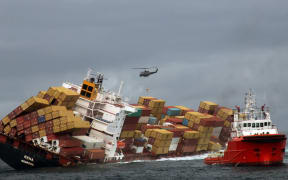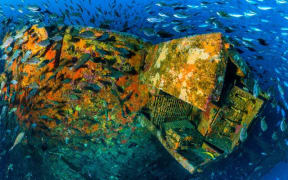Thirty metres underwater, just off the coast of Mount Maunganui beach, lies Ōtāiti, Astrolabe Reef - an oasis for coral, kelp and the marine life that feed from it.
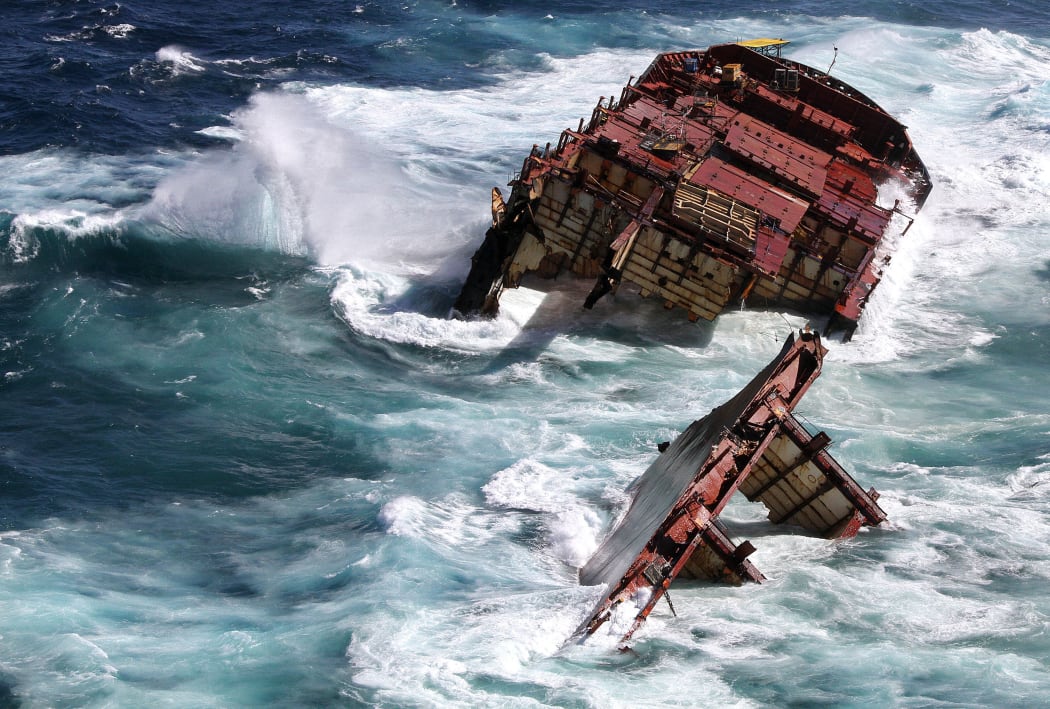
MV Rena was stuck on Astrolabe Reef as it was pounded by high seas off the coast of Tauranga (picture released on 4 April, 2012). Photo: Maritime New Zealand via AFP
It is a stark contrast to the carnage of meter-high piles of metal grinding rock structures to dust and chemical cocktails of oil, paint and dairy products bubbling to the surface 10 years ago today.
It was the early hours of 5 October when the Rena - a Greek owned container ship - slammed into the reef.
What started as a "shortcut" orchestrated by ship captain Mauro Balomaga and navigational officer Leonil Relon while the pair rushed to meet the tidal deadline at the Port of Tauranga led to devastation for seaside dwellers, iwi and marine and wildlife.
However, if you were to dive those 30 meters under the surface today it would be hard to picture the carnage that once lay bare.
Marine ecologist Phil Ross is nearing 300 dives, but remembers the first time he went down.
"If you imagine a container ship full of everything you could imagine and then took the ship, broke it in half and turned it upside down, then shook it and then jumped up and down on everything that came out - that was basically the scene that greeted us underwater," Ross said.
"You had piles of scrap metal and car parts and wires and peoples' home possessions.
"When we were diving we could hear the creaking and groaning of the ship rolling back and forth. But the striking thing was if you moved 30 metres away from this big physical disturbance the reef very much looked like a normal everyday reef except you could hear the ship grinding on the reef."
Three hundred and fifty tonnes of oil spewed out of the wreck as the months passed. Many of the 1368 containers fell overboard.
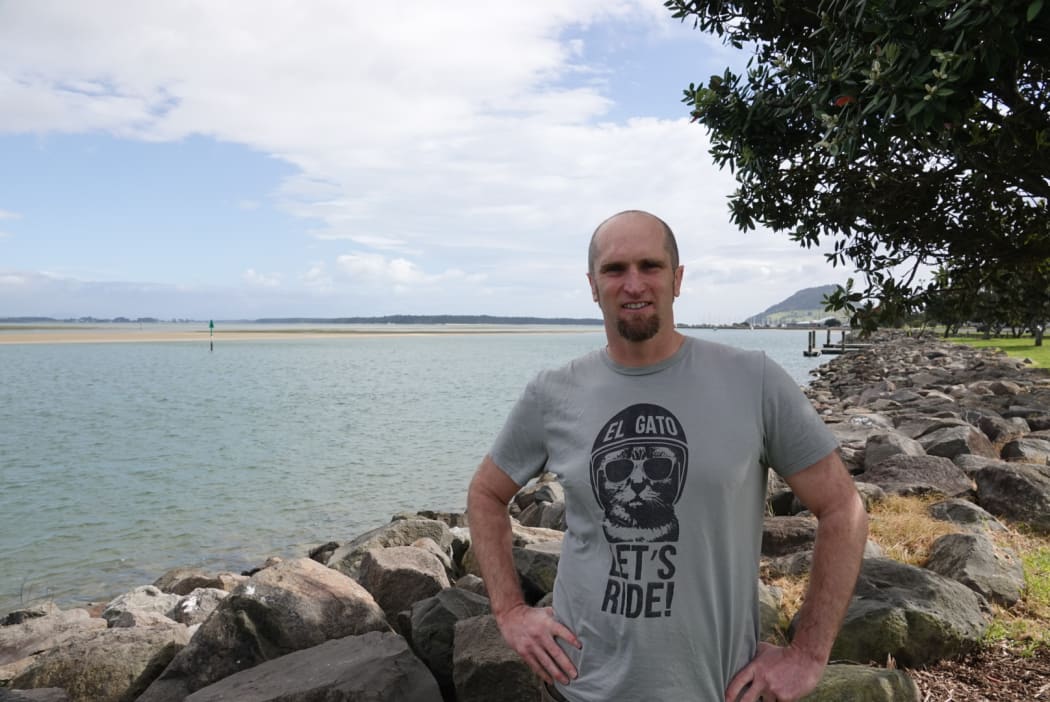
Marine ecologist Phil Ross. Photo: RNZ / Leah Tebbutt
Close to 300 of these are still deep underwater.
In January, Rena separated into two pieces and eventually began to sink.
It was labelled New Zealand's worst maritime environmental disaster and the salvage operation was the second most-expensive in the world at $700 million - paid for by Rena's owners' insurers.
Ross credited the salvage operation for the sight awaiting him under the water today.
"Large pieces of the debris were taken away in the early days of the salvage and the second part involved removing all the small pieces. Then we got to the point where there was almost a clean slate where the reef now had an opportunity to recover naturally as different species arrived and recruit onto the reef where we now have a typical kelp forest."
There are still three pieces of the ship strewn across the reef, although Ross said it would be hard to recognise parts as metal due to the thriving ecosystem which had made it a home.
"In terms of ecology, there was really very little to be gained from further salvage work."
However, that sentiment was not shared by all.
Reon Tuanau of Ngāi Te Rangi fought for Māori to have a say in the fate of the ship. Ultimately, he wanted the whole ship removed, he said.
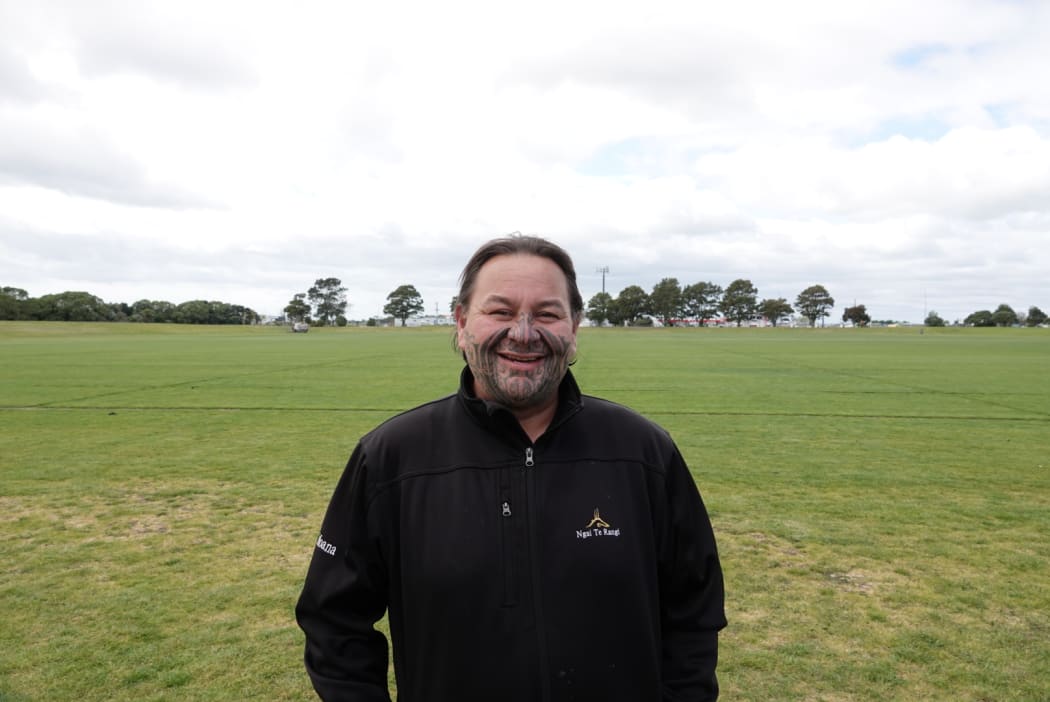
Reon Tuanau of Ngāi Te Rangi. Photo: RNZ / Leah Tebbutt
"We're happy to hear some of the reports that it is healing well and making a comeback. But still we would have preferred that it's gone. It's a constant sore when we think about that part of the moana especially.
"We know its still there, we can't see it, but we know it is still there."
Tuanau described the time as an uphill battle.
"It's a little bit mamae for us, a little bit sore, because there was an accident that occurred out there and we believe if things like that happen then people should clean it up to the full extent."
There would be no commemoration for the disaster which impacted upon both culture and relationships between iwi, he said.
"It's still very real, very raw for us. It hasn't disappeared from our minds.
"We won't forget it but we definitely won't be having any sort of event to remember it. That's something we want to leave behind to be honest, and move forward."
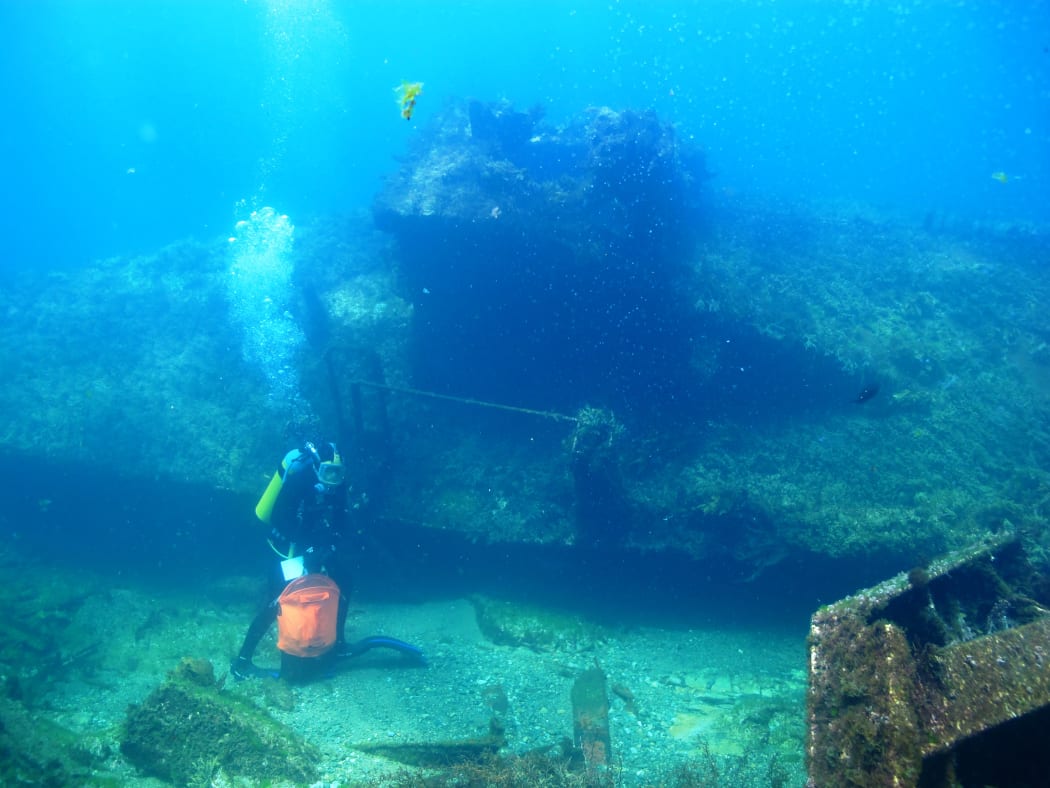
Rena underwater. Photo: Phil Ross
The event still brought Julia Graham to tears.
She founded the Western Bay of Plenty Wildlife Trust for the 420 little blue penguins affected by the oil spill.
"Some of them were 100 percent covered in oil. Its a blue penguin but it was just completely black," Graham said.
"And the smell. That is something that will always stick with me - collecting these birds as it comes out of the water and the most potent smell of oil. They just didn't stand a chance."
But they did, thanks to the efforts of Graham and many others.
The oil spill effected the penguins by seeping down to the skin, erasing their waterproof ability and eventually causing hypothermia.
It also happened in the penguins' breeding season. Graham feared with every penguin taken in to be cleaned was a burrow left waiting to be fed.
"But in the following three years we found it was completely worth it because they had the same breeding success, the same survival success, as the birds that didn't get oil on them."
Graham said birds were still being rescued six months after the event. She did not have fond memories while reflecting on the time.
However, she did remember the time "when everyone just wanted to help".
"Everyone was there for one reason and that was they couldn't stand to see one of our most beautiful beaches in the country just looking like that. It was a real collaboration between thousands of people from all walks of life, all over the country.
"It just goes to show what people can accomplish. For me, it's a time I see as hope. We can redeem ourselves and we can right our wrongs and there is hope for our native species as long as people are willing."

Rena underwater. Photo: Phil Ross
It was the memory of unity that Professor Chris Battershill held close.
The University of Waikato chair of coastal sciences said the biggest influence to the fast recovery was the 8000 who trained for clean-up duties and took to the beaches from Maketū to Mauao as the black waves of oil rolled in.
"It recovered incredibly fast, we didn't expect that. It's got a lot do with the power of nature particularly the bugs - they eat oil when it is washed up," Battershill said.
"But over 1000 tonnes were collected. As it came ashore it was immediately taken out of the system. We have the community to thank. They were unprecedented."
While the oil was the first concern, the wreck was still on the horizon unloading the contents of the containers which included a lot of dangerous goods, he said.
"Over 3500 tonnes of dairy products were lost off it. When you think about it, that's fertiliser for marine organisms. There were a lot of blooms on the seabed, there was metals, oil remnants, all sorts of things.
"The first six months, there was a real chemical cocktail swelling around the reed itself and cascading down onto the reef floor and we monitored all of that both near and distant to the ship during that period.
Battershill likened the time to a Covid-19 lockdown. A salvage exclusion zone was erected, enabling an increase in marine life including snapper and crayfish.
Just six months later the oil was no longer coming ashore and data suggested things were returning back to normal, he said.
"When you look back from that time, I think 'wow that happened very quick' and, as I say, the reason for that were the effectiveness of the salvagers plus the people on the beaches. Both as equally as important."


